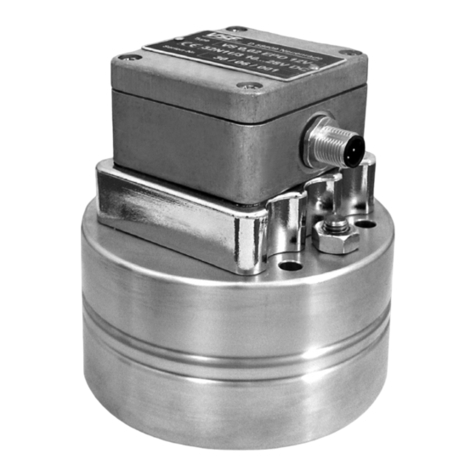
5
2. The hydraulic properties of the system
Is the max. operating pressure of the system lower than the max. permitted operating pressure of the flow meter?
Is the max. fall of pressure ∆p (on flow meter) below the max. permitted fall of pressure?
Does an excessively great fall in pressure ∆p occur on the flow meter at max. flow (e.g. with higher viscosity)?
Does the flow range of the flow meter (depending on viscosity) correspond to the provided flow?
Note that flow range decreases the greater the viscosity!
Does the temperature range of the flow meter correspond to the provided max. temperature of the medium?
Is the cross section of the pipe line large enough and are the falls in pressure in the system not excessive?
Is the hydraulic connection (supply and reverse flow) correctly connected and leak-proof?
Has the pump sufficient power to operate the system?
A blocked flow meter can stop the flow. Is a pressure control valve / bypass provided in the system?
7. MAXIMUM OPERATING PRESSURE
Before assembling the flow meter, you have to test that the max.
operating pressure of the system does not exceed the max. permitted
operating pressure of the flow meter. Meanwhile, observe the top
pressures that can occur, when operating the system.
3. Electronic evaluation and electrical safety
Have you selected the optimal flow meter and is this equipped with the appropriate preamplifier?
Does the power supply voltage of the flow meter correspond to the provided voltage?
Is the power supply voltage supplied by the mains or evaluation device sufficiently steady?
Does the output of the power supply voltage correspond to the required power output?
Has the electric connection been installed based on the enclosed connection plan?
Is the cable protected by a shield?
Is there a connection of the cable protective shielding via the round plug to the housing of the flow meter?
Is the flow meter connected firmly to the earth conductor PE or is the cable protective shield connected to ground GND?
Is the cable laid interference-free and is the installation secured from input of interference pulses?
Is the round plug of the connection cable firmly screwed together with the plug of the flow meter?
Are the wires on the evaluation device correctly and properly connected?
Is there a potential difference between the earth conductor PE on the flow meter and the earth conductor PE
on the evaluation device?
Does a correcting lead have to be laid to eliminate the potential difference between the flow meter and the evaluation device?
Does the entire system correspond to the directives of the electromagnetic compatibility laws (EMC)?
Have all local valid regulations, applicable directives, guidelines and background conditions of the
electromagnetic compatibility laws been maintained and observed?
Systems that can lead to personal injury through malfunction or failure are to be equipped with the appropriate safety devices.
The functioning of these safety devices is to be checked at regular intervals!
The following operating pressures are permitted depending on flow
meter version:
Flow meter in grey cast iron version pmax = 315 bar/4500 psi
Flow meter in stainless steel version pmax = 450 bar/6500 psi
Flow meter in special version pmax = 700 bar/10100 psi
Important:
Please consult VSE for all operating pressures > 450 bar / 6500 psi and for special versions.
8. INFORMATION ON EU DIRECTIVE 2014/68/EU ON PRESSURE EQUIPMENT
In terms of Article 2, No. 5 of the directive named above, VSE volume
sensors are so-called “pressuremaintaining components“ and this direc-
tive thereby relates to them. VSE volume sensors must thereby comply
with the technical requirements named in Section 4 of the directive in
accordance with Article 4, Paragraph (1d), Piping according to Para-
graph (1c). Typically, the fluids measured fall into Group 2 in accord-
ance with Article 13, Paragraph (1b). The volume sensors sold by VSE
do not comply with the limit values defined under Article 4, Paragraph
(1a). The technical requirements on volume sensors from VSE are there-
fore limited to the criteria defined in Article 4, Paragraph (3). That me-
ans that the devices must be designed and manufactured in accord-
ance with the good engineering practices prevailing in the member
state. We hereby confirm this. The paragraph also states that these
units may not bear the CE label named in Article 18. A CE declaration
of conformity is therefore not issued in accordance with 2014/68/EU.
The CE label of our volume sensors refers to Directive 2014/30/EU.




























